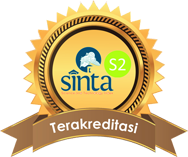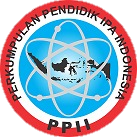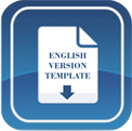STUDENT DIFFICULTY ANALYSIS IN COMPLETING CHEMISTRY ODD SEMESTER EXAM
DOI:
https://doi.org/10.15575/jtk.v5i2.9848Keywords:
chemistry learning, difficulty analysis, the questions of examAbstract
The problems obtained by the researcher in Senior High School 5 Takengon Central Aceh show that most students have difficulty solving odd semester exam questions in chemistry learning. This study aims to determine what difficulties students face and what factors cause students to have difficulties. The method used in this research is descriptive method with a qualitative approach. Data were collected through tests, questionnaires, and interviews. Data were analyzed descriptively and qualitatively. The results obtained indicate that students have difficulty in chemical calculations, exothermic and endothermic reactions, and the concept of chemistry equilibrium; the factors that affect students' difficulties in solving odd semester final exam questions on chemistry are the students', physical condition, students' motivation, and interest and students' low mathematical abilities.
References
Anggraini., F., & Jamalum, P. (2017). Analisis Kesulitan Siswa Kelas XI IPA SMA Negeri 1 Tanah Jawa dalam Menyelesaikan Soal-Soal Kelarutan dan Hasil Kali Kelarutan. Artikel. h. 6-7. Diakses pada tanggal 25 Januari 2019, Retrieved from http://osf.io/kx98r/download.
Boncel, W., Enawaty, E., & Putra, R. (2017). Deskripsi Kesalahan Siswa dalam Menyelesaikan Soal-Soal Hidrolisis Garam di Kelas XI IPA SMA Katolik Talino. Jurnal Pendidikan dan Pembelajaran Khatulistiwa, 6(12). Retrieved from https://jurnal.untan.ac.id/index.php/jpdpb/article/view/23059
Farid, D. M. (2015). Bimbingan Konseling Panduan Guru BK dan Guru Umum. Yogyakarta: Gava Media.
Irham, M., and Wiyani, N.A. (2017). Prikologi Pendidikan, Teori dan Aplikasi dalam Proses Pembelajaran. Yogyakarta: Ar-Ruzz Media.
Ismayani, Ani. (2016). “Pengaruh Penerapan STEM Project Based Learning Terhadap Kreativitas Matematis Siswa SMKâ€. Indonesian Digital Journal of Mathematics and Education, 3(4), 8-15. Retrieved from http://idealmathedu.p4tkmatematika.org/wp-content/uploads/IME-V3.4-07.Ani_Ismayani.pdf
Muhibbinsyah. (2015). Psikologi Pendidikan. Bandung: Remaja Rosdakarya.
Mujakir. (2018). Pemanfaatan Bahan Ajar Berdasarkan Multi Level Representasi untuk Melatih Kemampuan Siswa Menyelesaikan Masalah Kimia Larutan. Lantanida Journal. 5(2), 183-196. http://dx.doi.org/10.22373/lj.v5i2.2839
Mujakir., & Rusydi. (2019). Pembelajaran Kimia Inovatif untuk Melatih Siswa Menjelaskan dan Menyelesaikan Masalah. Jurnal Ilmiah Didaktika: Media Ilmiah Pendidikan dan Pengajaran 20 (1), 36-57. http://dx.doi.org/10.22373/jid.v20i1.4450
Munandar. H. (2018). Upaya Peningkatan Aktivitas Belajar Mahasiswa Prodi Pendidikan Biologi Menggunakan Pendekatan Contextual Teaching and Learning (CTL) pada Mata Kuliah Kimia Dasar. Lantanida Journal. 6(1), 1-102. tp://dx.doi.org/10.22373/lj.v6i1.3215
Nurjanah, Siti, I., & Sujadi. A. (2019). Analisis Kesulitan Siswa dalam Menyelesaikan Soal-Soal Program Linear pada Siswa Kelas X TKJ SMK Piri 2 Yogyakarta. Prosiding Seminar Nasional Etnomatnesi: 822-827. Retrieved from https://jurnal.ustjogja.ac.id/index.php/etnomatnesia/article/view/2424
Oktavianita, R., Kurniasih, D., & Fitriani, F. (2019). Efektivitas Penggunaan Media Karami (Kartu Rahasia Kimia) Terhadap Aktivitas dan Hasil Belajar Siswa pada Materi Hidrokarbon Kelas XI IPA Man Kubu Raya. Ar-Razi Jurnal Ilmiah, 7(1). Jurnal Ilmiah, 7(1), 20-29. https://doi.org/10.29406/ar-r.v7i1.1377
Ristiyani, E., & Bahriah, E. S. (2016). Analisis kesulitan belajar kimia siswa di SMAN X Kota Tangerang Selatan. Jurnal Penelitian dan Pembelajaran IPA, 2(1), 18-29. http://dx.doi.org/10.30870/jppi.v2i1.431
Sumiharsono. (2017). Media Pembelajaran. Jawa Timur: CV Pustaka Abadi.
Wood., & Derek. (2017). Kiat Mengatasi Gangguan Belajar. Yogakarta: Kata Hati.
Yakina, Y., Kurniati, T., & Fadhilah, R. (2017). Analisis Kesulitan Belajar Siswa pada Mata Pelajaran Kimia Kelas X di SMA Negeri 1 Sungai Ambawang. Ar-Razi Jurnal Ilmiah, 5(2). http://dx.doi.org/10.29406/arz.v5i2.641
Downloads
Published
Issue
Section
License
Authors who publish with this journal agree to the following terms:
- Authors retain copyright and grant the journal right of first publication with the work simultaneously licensed under a  Creative Commons Attribution-ShareAlike that allows others to share the work with an acknowledgement of the work's authorship and initial publication in this journal.
- Authors are able to enter into separate, additional contractual arrangements for the non-exclusive distribution of the journal's published version of the work (e.g., post it to an institutional repository or publish it in a book), with an acknowledgement of its initial publication in this journal.
- Authors are permitted and encouraged to post their work online (e.g., in institutional repositories or on their website) prior to and during the submission process, as it can lead to productive exchanges, as well as earlier and greater citation of published work (See The Effect of Open Access).








